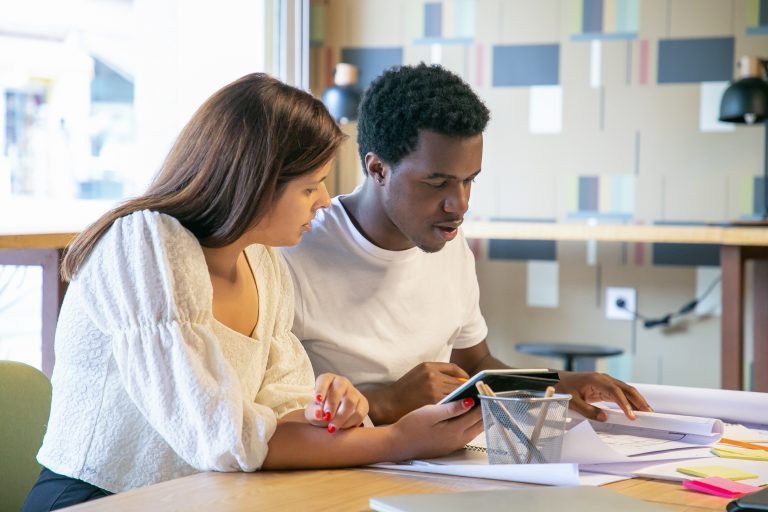Culinary tourism, or food tourism, is a growing trend where travelers embark on journeys primarily to explore and enjoy new cuisines. For a Nigerian foodie, this presents an exciting opportunity to experience diverse flavors and cooking techniques from around the world. Nigeria, with its rich and varied culinary heritage, offers a robust starting point for any gastronomic adventure. From spicy jollof rice to savory suya, Nigerian cuisine sets a high bar for any global culinary exploration. This article delves into some of the best destinations for food lovers, must-try dishes, and tips on finding authentic local food.
Best Destinations for Food Lovers
1. Thailand
Thailand is a haven for food lovers, known for its vibrant street food culture and a plethora of flavors that combine sweet, salty, sour, and spicy elements. Cities like Bangkok and Chiang Mai are especially renowned for their culinary offerings.
- Must-try dishes: Pad Thai, Tom Yum Goong (spicy shrimp soup), Som Tum (green papaya salad), and Massaman curry.
- Culinary experiences: Take a cooking class to learn the art of Thai cuisine, explore floating markets, and indulge in street food tours.
2. Italy
Italy is synonymous with culinary excellence. Each region offers distinct dishes and culinary traditions, making it a paradise for food lovers.
- Must-try dishes: Pizza from Naples, pasta from Bologna, risotto from Milan, and gelato from Florence.
- Culinary experiences: Wine tasting in Tuscany, cheese tours in Parma, and food festivals such as the Alba White Truffle Fair.
3. Japan
Japan’s cuisine is celebrated for its precision, presentation, and umami flavors. From sushi in Tokyo to ramen in Fukuoka, there’s a rich variety to explore.
- Must-try dishes: Sushi, sashimi, ramen, tempura, and kaiseki (a traditional multi-course meal).
- Culinary experiences: Visit Tsukiji Fish Market, take a sake brewery tour, and participate in a tea ceremony.
4. France
France’s culinary reputation is unparalleled, with a focus on high-quality ingredients and classic techniques. From the bustling markets of Paris to the vineyards of Bordeaux, food is a central part of French culture.
- Must-try dishes: Croissants, escargots, coq au vin, ratatouille, and crème brûlée.
- Culinary experiences: Enroll in a pastry-making class, visit Michelin-starred restaurants, and explore regional wine tours.
5. Mexico
Mexico’s cuisine is a delightful fusion of indigenous Mesoamerican cooking with European, particularly Spanish, elements. It’s known for its bold flavors and extensive use of spices.
- Must-try dishes: Tacos, mole, tamales, and chiles en nogada.
- Culinary experiences: Take part in a traditional Mexican cooking class, visit local markets, and experience Dia de los Muertos (Day of the Dead) festivities.
6. India
India’s diverse and flavorful cuisine reflects its rich cultural history. Each region boasts unique dishes and culinary techniques, from the spicy curries of the south to the tandoori delights of the north.
- Must-try dishes: Biryani, butter chicken, masala dosa, and paneer tikka.
- Culinary experiences: Participate in a spice tour in Kerala, attend a traditional cooking class in Rajasthan, and explore the street food of Mumbai.
7. Spain
Spain offers a vibrant culinary scene, known for its tapas, seafood, and regional specialties. Cities like Barcelona, Madrid, and Seville each bring something unique to the table.
- Must-try dishes: Paella, tapas, gazpacho, and churros.
- Culinary experiences: Enjoy a tapas crawl in Madrid, visit a vineyard in Rioja, and attend the La Tomatina festival in Buñol.
8. Morocco
Moroccan cuisine is rich in spices and flavors, influenced by a mix of Arabic, Berber, and Mediterranean traditions. The bustling markets and aromatic dishes make it a food lover’s paradise.
- Must-try dishes: Tagine, couscous, harira, and pastilla.
- Culinary experiences: Take a cooking class in Marrakech, explore the souks of Fez, and enjoy a traditional Moroccan tea ceremony.
9. Turkey
Turkish cuisine is a blend of Central Asian, Middle Eastern, and Balkan influences. The use of fresh ingredients and intricate flavors makes it a must-visit destination for food enthusiasts.
- Must-try dishes: Kebabs, baklava, meze, and Turkish delight.
- Culinary experiences: Visit the Grand Bazaar in Istanbul, take a cooking class in Cappadocia, and enjoy a traditional Turkish breakfast.
10. Peru
Peru’s cuisine is a melting pot of indigenous and international influences, with a strong emphasis on fresh ingredients and bold flavors. Lima, the capital, is a culinary hotspot.
- Must-try dishes: Ceviche, lomo saltado, aji de gallina, and anticuchos.
- Culinary experiences: Tour the markets of Lima, take a cooking class focusing on Peruvian staples, and explore the food scene in Cusco.
11. Greece
Greek cuisine is characterized by its use of fresh, simple ingredients and traditional recipes that have been passed down through generations. The Mediterranean diet is central to Greek food culture.
- Must-try dishes: Moussaka, souvlaki, tzatziki, and baklava.
- Culinary experiences: Visit a traditional taverna in Athens, take a cooking class in Crete, and explore the markets in Thessaloniki.
12. Ethiopia
Ethiopian cuisine is unique and flavorful, with a strong emphasis on spices and communal eating. Injera, a sourdough flatbread, is a staple in Ethiopian meals.
- Must-try dishes: Injera with doro wat, kitfo, tibs, and shiro.
- Culinary experiences: Participate in a traditional coffee ceremony, explore the markets of Addis Ababa, and enjoy a meal at a local restaurant.
Must-Try Dishes and Culinary Experiences
1. Pho in Vietnam
Pho, a traditional Vietnamese noodle soup consisting of broth, rice noodles, herbs, and meat (usually beef or chicken), is a must-try dish. Hanoi and Ho Chi Minh City are the best places to enjoy authentic pho.
2. Ceviche in Peru
Ceviche, a dish made from fresh raw fish cured in citrus juices and spiced with chili peppers, is a staple of Peruvian cuisine. Lima, with its coastal location, offers the freshest and most varied ceviche.
3. Paella in Spain
Paella, a traditional Spanish rice dish originally from Valencia, is made with a variety of ingredients like seafood, chicken, rabbit, and vegetables. Enjoying a paella by the beach in Valencia is a quintessential Spanish culinary experience.
4. Bibimbap in South Korea
Bibimbap, a Korean mixed rice dish served with various vegetables, meats, and a raw or fried egg, is a hearty and flavorful meal. Seoul’s many restaurants offer authentic bibimbap experiences.
5. Peking Duck in China
Peking duck, a famous duck dish from Beijing, is known for its thin, crispy skin and is often served with pancakes, hoisin sauce, and scallions. Savoring this delicacy in Beijing is a highlight for any culinary tourist.
6. Biryani in India
Biryani, a mixed rice dish with its roots in the Indian subcontinent, is rich in spices, meat, and vegetables. Hyderabadi biryani, with its unique flavor, is particularly famous.
7. Tagine in Morocco
Tagine, a slow-cooked stew braised at low temperatures, is named after the earthenware pot in which it is cooked. The dish can be made with a variety of meats and vegetables, creating a rich, aromatic meal.
8. Moussaka in Greece
Moussaka, a layered casserole dish made with eggplant, ground meat, and béchamel sauce, is a beloved Greek comfort food. Athens and the Greek islands offer some of the best versions of this dish.
9. Baklava in Turkey
Baklava, a rich, sweet pastry made of layers of filo filled with chopped nuts and sweetened with syrup or honey, is a staple of Turkish desserts. Enjoying freshly made baklava in Istanbul is a must.
How to Find Authentic Local Food
1. Research Before You Go
Before traveling, spend time researching the local cuisine and popular dishes of your destination. Look for food blogs, travel websites, and YouTube channels dedicated to food tourism. Social media platforms like Instagram and Pinterest are also great resources for discovering local food spots.
2. Ask Locals for Recommendations
One of the best ways to find authentic food is to ask locals. They often know the hidden gems that tourists might overlook. Whether it’s a taxi driver, hotel staff, or a friendly stranger, don’t hesitate to ask for their favorite food spots.
3. Visit Local Markets
Local markets are treasure troves of fresh produce and traditional foods. They are excellent places to sample a variety of local flavors in one location. Markets also provide a glimpse into the daily life and culinary practices of the area.
4. Join Food Tours
Food tours are an excellent way to explore a city’s culinary landscape. Guided by knowledgeable locals, these tours often include visits to multiple eateries, street food stalls, and markets, providing a comprehensive food experience.
5. Learn the Language Basics
Learning a few key phrases in the local language can go a long way in finding authentic food. Phrases like “What do you recommend?” or “Where do locals eat?” can help bridge the communication gap and lead to better food discoveries.
6. Avoid Tourist Traps
Restaurants located in popular tourist areas often cater to international tastes and may not offer authentic local cuisine. Venture away from tourist hubs to find eateries frequented by locals.
7. Read Reviews and Check Ratings
Online reviews and ratings can provide valuable insights into the quality and authenticity of a restaurant. Websites like TripAdvisor, Yelp, and Google Reviews are useful resources for this purpose.
For a Nigerian foodie, culinary tourism offers a chance to expand culinary horizons and experience the rich tapestry of global cuisines. From the bustling street food stalls of Thailand to the refined dining rooms of France, each destination has its own unique culinary identity. By seeking out authentic local food, participating in culinary experiences, and savoring must-try dishes, food lovers can create unforgettable travel memories. Embracing culinary tourism not only enhances one’s appreciation of different cultures but also deepens the love for food, making every journey a delicious adventure.
Bonus: Culinary Tourism in Nigeria
While exploring global cuisines is exciting, it’s worth noting that Nigeria itself is a fantastic destination for culinary tourism. Nigerian cuisine is diverse and full of bold flavors, reflecting the country’s rich cultural heritage. For international foodies, Nigeria offers a treasure trove of culinary delights.
Must-Try Nigerian Dishes
- Jollof Rice: A beloved West African dish made with rice, tomatoes, onions, and various spices. It’s often served with fried plantains, chicken, or fish.
- Egusi Soup: A hearty soup made with melon seeds, leafy vegetables, and meat or fish. It’s typically enjoyed with pounded yam or fufu.
- Suya: Spicy skewered meat, usually beef or chicken, grilled to perfection and served with sliced onions, tomatoes, and spicy peanut powder.
- Pounded Yam and Egusi: Pounded yam is a smooth, dough-like food made from yams. It’s often paired with rich, flavorful soups like egusi.
- Pepper Soup: A spicy soup made with meat or fish, flavored with a variety of local spices. It’s commonly enjoyed as an appetizer or a warming comfort food.
Culinary Experiences in Nigeria
- Street Food Tours: Explore the bustling street food scene in cities like Lagos and Abuja. Taste local favorites such as puff-puff (deep-fried dough balls), akara (bean cakes), and suya.
- Cooking Classes: Join a cooking class to learn how to prepare traditional Nigerian dishes. Many classes offer hands-on experiences where you can cook and then enjoy your creations.
- Food Festivals: Attend food festivals like the Lagos Food and Drink Festival, where you can sample a wide range of Nigerian and international dishes.
- Local Markets: Visit local markets like Balogun Market in Lagos to experience the vibrant atmosphere and buy fresh ingredients used in Nigerian cooking.
Culinary tourism in Nigeria not only showcases the country’s rich culinary heritage but also provides an opportunity to support local businesses and communities. Whether you’re a Nigerian exploring global cuisines or an international traveler discovering Nigerian flavors, culinary tourism is a journey of taste and culture that enriches the soul.
References
By immersing yourself in culinary tourism, you can create unforgettable experiences that celebrate the art of food and the joy of travel. Whether savoring the umami flavors of Japan or the spicy delights of Nigeria, every dish tells a story, and every bite is an adventure.






Leave a Comment